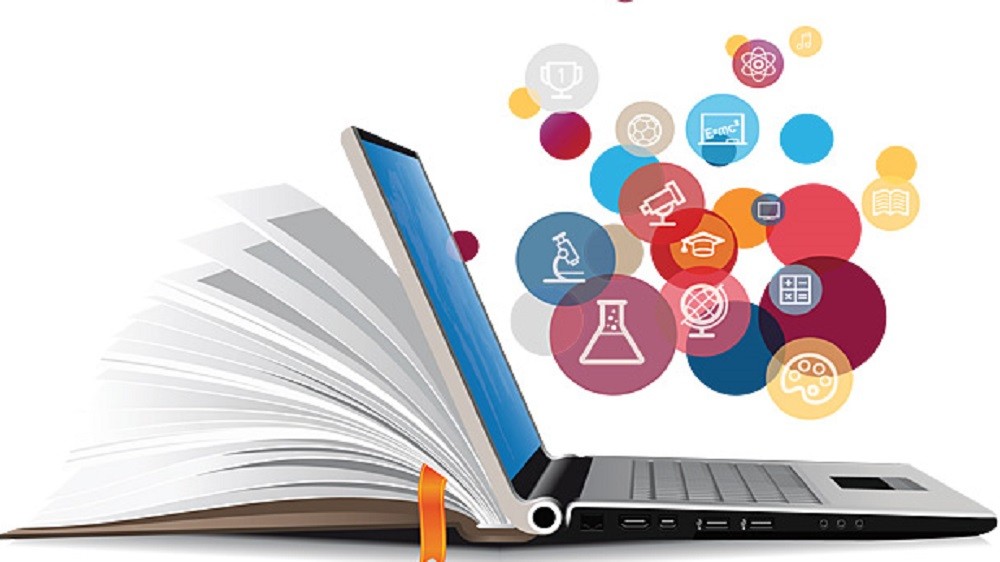Explaining the technology in education and learning
Technology in education has undoubtedly transformed education and learning in profound ways, and making education more accessible.

In today's fast-paced, interconnected world, technology in education has become an integral part of our daily lives.
It has permeated nearly every aspect of society, and education is no exception. The integration of technology into education has revolutionized the way we teach and learn, offering countless opportunities to enhance the educational experience.
In this blog post, we will explore the multifaceted role of technology in education and learning, highlighting its benefits, challenges, and future prospects.
The Evolution of Technology in Education
Before delving into the current state of technology in education, let's take a brief journey through its evolution.
Education has historically relied on traditional methods such as books, chalkboards, and face-to-face interactions. However, the digital revolution of the late 20th century paved the way for technology's entry into the classroom.
- The Advent of Personal Computers: The introduction of personal computers in the 1980s marked a significant turning point in education. Computers made it possible to digitize content, create interactive educational software, and facilitate data-driven instruction.
- The Internet Era: With the widespread adoption of the internet in the 1990s, information became readily accessible to anyone with a connection. This opened up new possibilities for online learning, research, and collaboration.
- The Rise of Mobile Devices: The 21st century saw the proliferation of smartphones and tablets, making learning more mobile and flexible. Mobile apps and e-books became popular tools for both educators and students.
- The Emergence of EdTech: Educational technology (EdTech) companies have played a crucial role in shaping modern education. They have developed innovative solutions, such as learning management systems (LMS), virtual classrooms, and adaptive learning platforms.
The Benefits of Technology in Education
- Access to Information: The internet has democratized access to information. Students can now explore a vast array of resources, from academic journals to YouTube tutorials, to supplement their learning.
- Personalized Learning: Adaptive learning platforms use algorithms to tailor content to individual students' needs and abilities. This personalized approach helps students learn at their own pace, increasing comprehension and retention.
- Enhanced Engagement: Technology has made learning more interactive and engaging. Gamification, virtual reality (VR), and multimedia content can captivate students' attention and make complex concepts easier to grasp.
- Collaborative Learning: Online tools and platforms facilitate collaboration among students, regardless of their geographical location. They can work on group projects, share ideas, and provide peer feedback in virtual spaces.
- Efficiency and Productivity: Educational software automates administrative tasks, allowing educators to focus more on teaching. It also streamlines the grading process and provides valuable insights into students' progress.
- Accessibility and Inclusivity: Technology has made education more accessible to individuals with disabilities. Screen readers, captioning, and other assistive technologies ensure that everyone can participate in the learning process.
- Global Learning Opportunities: Virtual classrooms and online courses enable students to connect with educators and peers from around the world, broadening their cultural awareness and perspectives.
Challenges in Implementing Technology in Education
While the benefits of technology in education are evident, its integration comes with its fair share of challenges:
- Digital Divide: Not all students have equal access to technology and the internet. The digital divide can exacerbate educational inequalities, disadvantaging those without access to necessary devices and connectivity.
- Privacy and Security Concerns: Educational institutions must safeguard student data and privacy. The collection and storage of sensitive information require robust cybersecurity measures.
- Teacher Training: Educators need adequate training to effectively use technology in the classroom. Some teachers may struggle to adapt to new tools and methods, hindering the integration process.
- Content Quality: The abundance of online resources can make it challenging to discern reliable information from misinformation. Ensuring the quality of digital content remains a constant concern.
- Screen Time and Health: Excessive screen time can have negative effects on students' physical and mental health. Striking a balance between technology use and other activities is crucial.
- Costs and Sustainability: Investing in technology can be costly for educational institutions. Additionally, keeping up with the latest hardware and software updates can strain budgets.
The Future of Technology in Education
As technology continues to advance, the future of education holds exciting possibilities:
- Artificial Intelligence (AI) and Machine Learning: AI-powered educational tools can provide even more personalized learning experiences. These systems can analyze student data to identify strengths and weaknesses, offering targeted support.
- Augmented and Virtual Reality (AR/VR): AR and VR technologies will likely become more integrated into classrooms, offering immersive learning experiences. Students can explore historical sites, conduct virtual experiments, and more.
- Blockchain Credentials: Blockchain technology can secure and verify educational credentials, making it easier for students to share their achievements with employers and institutions worldwide.
- Hybrid Learning Models: The COVID-19 pandemic accelerated the adoption of online and hybrid learning models. These models will continue to evolve, providing flexibility for students and educators.
- Global Collaboration: Technology will facilitate increased global collaboration among educators and researchers. The exchange of ideas and resources across borders will enrich the educational landscape.
Technology has transformed education and learning in ways unimaginable just a few decades ago. It has democratized access to information, personalized learning experiences, and enhanced engagement and collaboration.
However, it also presents challenges, such as the digital divide and privacy concerns, that must be addressed. The future of technology in education promises even more innovation and opportunities for learners of all ages.
As we continue to navigate this digital landscape, it is essential to strike a balance between harnessing technology's power and addressing its limitations.
Ultimately, technology is a tool, and its impact on education depends on how effectively it is harnessed by educators, students, and policymakers to achieve the goal of providing quality education for all.
What's Your Reaction?
















